-
 Bitcoin
Bitcoin $83,722.4899
-2.34% -
 Ethereum
Ethereum $1,571.8109
-4.15% -
 Tether USDt
Tether USDt $1.0001
0.02% -
 XRP
XRP $2.0738
-4.14% -
 BNB
BNB $578.7753
-1.84% -
 Solana
Solana $125.0081
-5.57% -
 USDC
USDC $1.0001
0.02% -
 TRON
TRON $0.2539
0.76% -
 Dogecoin
Dogecoin $0.1535
-3.82% -
 Cardano
Cardano $0.6057
-5.84% -
 UNUS SED LEO
UNUS SED LEO $9.3958
-0.37% -
 Chainlink
Chainlink $12.1796
-3.98% -
 Avalanche
Avalanche $18.8252
-5.99% -
 Stellar
Stellar $0.2336
-3.94% -
 Toncoin
Toncoin $2.8503
-4.23% -
 Shiba Inu
Shiba Inu $0.0...01161
-2.86% -
 Sui
Sui $2.0849
-5.88% -
 Hedera
Hedera $0.1576
-5.78% -
 Bitcoin Cash
Bitcoin Cash $320.2269
-3.76% -
 Litecoin
Litecoin $75.8543
-2.64% -
 Polkadot
Polkadot $3.5213
-5.14% -
 Dai
Dai $1.0001
0.01% -
 Bitget Token
Bitget Token $4.2699
-1.07% -
 Hyperliquid
Hyperliquid $15.0314
-8.46% -
 Ethena USDe
Ethena USDe $0.9992
0.01% -
 Pi
Pi $0.6305
-14.83% -
 Monero
Monero $218.8124
2.12% -
 Uniswap
Uniswap $5.1492
-4.68% -
 OKB
OKB $52.3056
0.11% -
 Pepe
Pepe $0.0...07110
-4.14%
How does leverage mining work in DeFi mining?
Leverage mining in DeFi boosts potential returns by borrowing funds to increase mining stakes, but it also increases risks like liquidation and high borrowing costs.
Apr 15, 2025 at 04:36 am
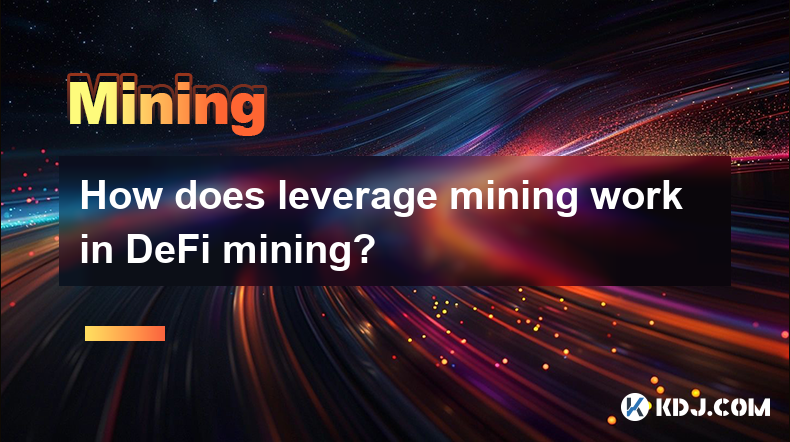
Leverage mining in DeFi mining is a sophisticated strategy that allows users to amplify their potential returns by borrowing additional funds to increase their mining stake. This method can significantly boost profits but also comes with increased risks. In this article, we will delve into the mechanics of leverage mining, its benefits, and the risks involved, as well as provide a step-by-step guide on how to engage in leverage mining.
Understanding Leverage Mining
Leverage mining involves using borrowed funds to increase the amount of cryptocurrency that can be staked or locked in a DeFi mining pool. By doing so, users can potentially earn higher rewards than they would with their own capital alone. This strategy is commonly used in decentralized finance (DeFi) platforms that offer lending and borrowing services alongside their mining pools.
The principle behind leverage mining is similar to using leverage in traditional financial markets. In DeFi, users can borrow assets from lending protocols like Aave or Compound, and then use these borrowed assets to participate in mining activities on platforms such as Yearn.Finance or Curve.
Benefits of Leverage Mining
One of the primary benefits of leverage mining is the potential for increased returns. By using borrowed funds, users can stake a larger amount of cryptocurrency, which can lead to higher mining rewards. For example, if a user has 1 ETH and borrows an additional 2 ETH, they can stake a total of 3 ETH, thereby tripling their potential rewards.
Another advantage is the flexibility that leverage mining offers. Users can choose the amount of leverage they want to use, allowing them to tailor their strategy to their risk tolerance and market conditions. Additionally, many DeFi platforms allow users to adjust their leverage positions dynamically, providing more control over their investments.
Risks of Leverage Mining
While leverage mining can amplify returns, it also comes with significant risks. The most obvious risk is the potential for liquidation. If the value of the staked assets drops significantly, the borrowed funds may need to be repaid immediately, which could result in the loss of the user's initial capital.
Another risk is the cost of borrowing. DeFi lending platforms charge interest on borrowed funds, which can eat into the profits from mining. If the interest rates are high, the net returns from leverage mining may be lower than expected.
Additionally, the complexity of managing leveraged positions can be a challenge for inexperienced users. It requires a good understanding of market conditions, interest rates, and the specific mechanics of the DeFi platforms being used.
How to Engage in Leverage Mining
Engaging in leverage mining requires careful planning and execution. Here is a detailed guide on how to get started:
Choose a DeFi Platform: Start by selecting a DeFi platform that offers both lending and mining services. Popular options include Aave, Compound, Yearn.Finance, and Curve. Research each platform to understand their fees, interest rates, and mining rewards.
Deposit Collateral: Once you have chosen a platform, you need to deposit collateral to secure your loan. This collateral is typically in the form of cryptocurrency, such as ETH or stablecoins. The amount of collateral required will depend on the platform's loan-to-value (LTV) ratio.
Borrow Assets: After depositing collateral, you can borrow assets from the lending pool. The amount you can borrow will be based on the value of your collateral and the LTV ratio. For example, if you deposit 1 ETH as collateral and the LTV ratio is 75%, you can borrow up to 0.75 ETH.
Stake Borrowed Assets: Take the borrowed assets and stake them in the mining pool of your choice. Ensure that the mining pool is compatible with the assets you have borrowed. Some platforms may have specific requirements or restrictions on which assets can be staked.
Monitor and Manage: Keep a close eye on your leveraged position. Monitor the value of your staked assets, the interest rates on your borrowed funds, and the mining rewards you are earning. Adjust your position as needed to manage risk and maximize returns.
Repay Borrowed Funds: When you are ready to exit your leveraged position, you will need to repay the borrowed funds plus any accrued interest. Withdraw your staked assets from the mining pool and use them to repay the loan. If your mining rewards exceed the cost of borrowing, you will have made a profit.
Choosing the Right Assets for Leverage Mining
Selecting the right assets for leverage mining is crucial for success. Stablecoins are often a popular choice because they are less volatile than other cryptocurrencies, which can help reduce the risk of liquidation. Examples of stablecoins include USDT, USDC, and DAI.
However, stablecoins may offer lower mining rewards compared to more volatile assets like ETH or BTC. If you are willing to take on more risk, you can consider using these assets for leverage mining. Just be aware that the potential for higher rewards comes with a higher risk of liquidation.
Managing Risk in Leverage Mining
Effective risk management is essential when engaging in leverage mining. Here are some strategies to help manage risk:
Set Stop-Losses: Many DeFi platforms allow users to set stop-loss orders, which can automatically liquidate your position if the value of your staked assets falls below a certain threshold. This can help limit potential losses.
Diversify: Consider diversifying your leverage mining activities across multiple platforms and assets. This can help spread risk and reduce the impact of any single investment going wrong.
Stay Informed: Keep up to date with market conditions, interest rates, and any changes to the DeFi platforms you are using. Being informed can help you make better decisions and react quickly to changing circumstances.
Use Lower Leverage: If you are new to leverage mining, consider starting with lower levels of leverage. This can help you gain experience and build confidence without exposing yourself to excessive risk.
Frequently Asked Questions
Q: Can I use leverage mining on any DeFi platform?
A: Not all DeFi platforms support leverage mining. It is important to choose a platform that offers both lending and mining services. Platforms like Aave, Compound, Yearn.Finance, and Curve are popular choices for leverage mining.
Q: What happens if I cannot repay my borrowed funds?
A: If you are unable to repay your borrowed funds, your collateral may be liquidated to cover the debt. This could result in the loss of your initial capital. It is important to monitor your leveraged position closely and have a plan in place to manage potential liquidations.
Q: How do I calculate the potential returns from leverage mining?
A: To calculate potential returns, you need to consider the mining rewards, the interest rate on borrowed funds, and the value of your staked assets. Subtract the cost of borrowing from the mining rewards to determine your net returns. Keep in mind that the value of your staked assets can fluctuate, which will affect your overall returns.
Q: Are there any tools to help me manage my leverage mining activities?
A: Yes, there are several tools available to help manage leverage mining. Platforms like Zapper and DeBank offer dashboards that can help you track your positions across multiple DeFi protocols. Additionally, some platforms provide calculators to estimate potential returns and risks.
Disclaimer:info@kdj.com
The information provided is not trading advice. kdj.com does not assume any responsibility for any investments made based on the information provided in this article. Cryptocurrencies are highly volatile and it is highly recommended that you invest with caution after thorough research!
If you believe that the content used on this website infringes your copyright, please contact us immediately (info@kdj.com) and we will delete it promptly.
- From Meme Coin to Serious Contender: Dogecoin (DOGE) Reaches a Market Cap of $750 Million
- 2025-04-16 18:20:13
- Semler Scientific Is Going All-In on Bitcoin With a $500M Securities Offering and a New Loan Agreement With Coinbase
- 2025-04-16 18:20:13
- The battle over digital freedom of expression and the adoption of Bitcoin
- 2025-04-16 18:15:13
- Upbit Lists WalletConnect (WCT) for Trading on KRW, BTC, and USDT Markets on April 16
- 2025-04-16 18:15:13
- Bitcoin (BTC) Prices Today Reflect Minor but Notable Losses
- 2025-04-16 18:10:13
- Tether Invests in Fizen, a Fintech Firm Focusing on Digital Asset Payments and Private Crypto Wallets
- 2025-04-16 18:10:13
Related knowledge
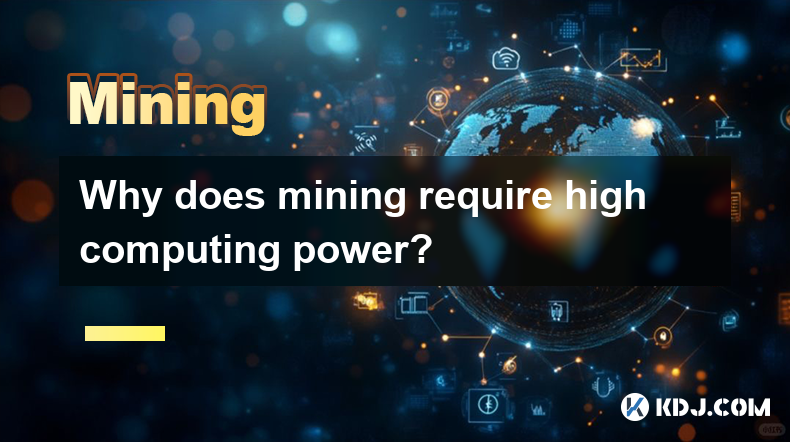
Why does mining require high computing power?
Apr 16,2025 at 12:07pm
Mining in the cryptocurrency world, particularly in the case of Bitcoin and other Proof of Work (PoW) cryptocurrencies, is a process that demands significant computational resources. This article delves into the reasons behind this high demand for computing power, exploring the technical intricacies and the underlying principles that necessitate such re...
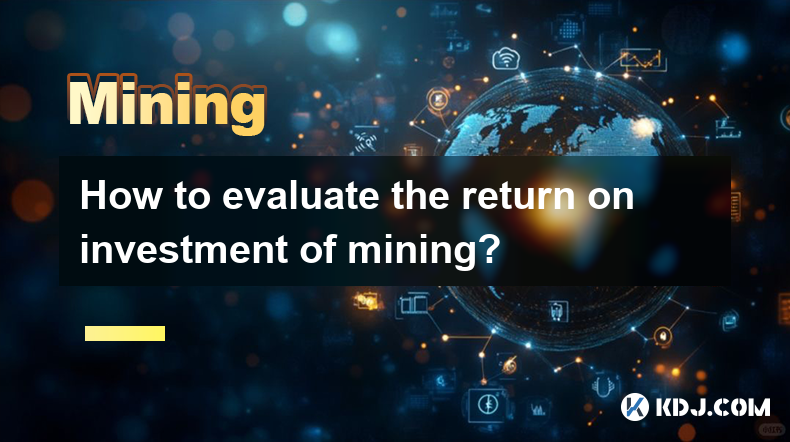
How to evaluate the return on investment of mining?
Apr 16,2025 at 05:28pm
Mining in the cryptocurrency world refers to the process of verifying transactions and adding them to the blockchain, which in turn rewards miners with newly created coins. Evaluating the return on investment (ROI) of mining is crucial for miners to understand whether their operations are profitable. This article will delve into the various factors and ...
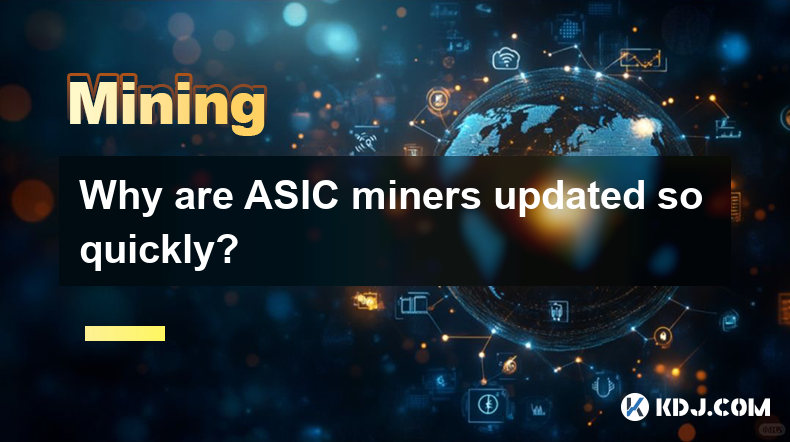
Why are ASIC miners updated so quickly?
Apr 16,2025 at 01:07pm
The rapid updates of ASIC miners in the cryptocurrency industry are driven by several key factors that contribute to their constant evolution and improvement. ASIC miners, or Application-Specific Integrated Circuit miners, are specialized hardware designed to mine specific cryptocurrencies with high efficiency. The primary reason for their frequent upda...
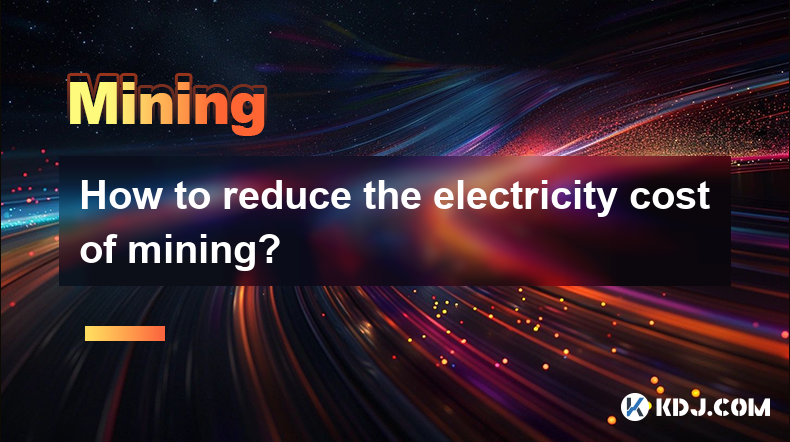
How to reduce the electricity cost of mining?
Apr 16,2025 at 08:42am
Mining cryptocurrencies, particularly Bitcoin, is an energy-intensive process that can lead to significant electricity costs. However, there are several strategies that miners can employ to reduce these expenses and make their operations more cost-effective. In this article, we will explore various methods to minimize the electricity cost of mining. Cho...
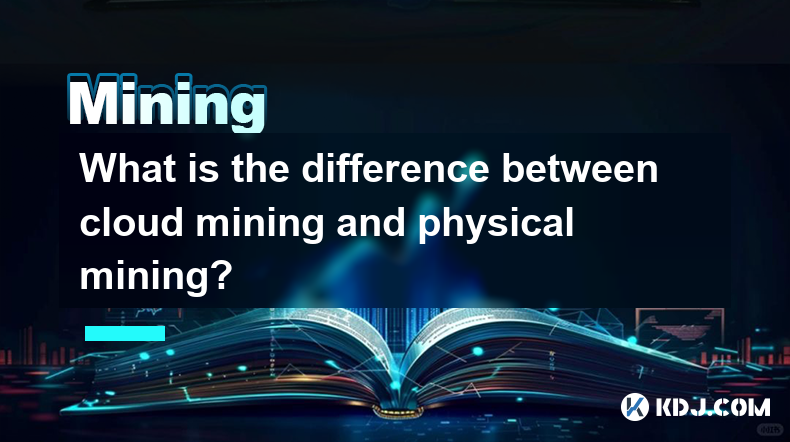
What is the difference between cloud mining and physical mining?
Apr 16,2025 at 01:49am
What is the difference between cloud mining and physical mining? In the world of cryptocurrencies, mining is the process by which new coins are generated and transactions are verified and added to the blockchain. There are two primary methods of mining: cloud mining and physical mining. Understanding the differences between these two approaches can help...
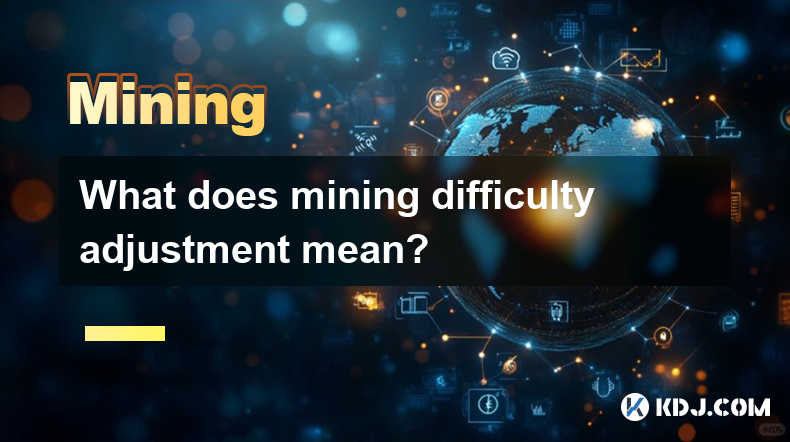
What does mining difficulty adjustment mean?
Apr 16,2025 at 12:42am
What does mining difficulty adjustment mean? Mining difficulty adjustment is a crucial mechanism in blockchain networks, particularly in Proof of Work (PoW) systems like Bitcoin. It ensures that the rate at which new blocks are added to the blockchain remains consistent, despite fluctuations in the total computational power (hash rate) of the network. T...

Why does mining require high computing power?
Apr 16,2025 at 12:07pm
Mining in the cryptocurrency world, particularly in the case of Bitcoin and other Proof of Work (PoW) cryptocurrencies, is a process that demands significant computational resources. This article delves into the reasons behind this high demand for computing power, exploring the technical intricacies and the underlying principles that necessitate such re...

How to evaluate the return on investment of mining?
Apr 16,2025 at 05:28pm
Mining in the cryptocurrency world refers to the process of verifying transactions and adding them to the blockchain, which in turn rewards miners with newly created coins. Evaluating the return on investment (ROI) of mining is crucial for miners to understand whether their operations are profitable. This article will delve into the various factors and ...

Why are ASIC miners updated so quickly?
Apr 16,2025 at 01:07pm
The rapid updates of ASIC miners in the cryptocurrency industry are driven by several key factors that contribute to their constant evolution and improvement. ASIC miners, or Application-Specific Integrated Circuit miners, are specialized hardware designed to mine specific cryptocurrencies with high efficiency. The primary reason for their frequent upda...

How to reduce the electricity cost of mining?
Apr 16,2025 at 08:42am
Mining cryptocurrencies, particularly Bitcoin, is an energy-intensive process that can lead to significant electricity costs. However, there are several strategies that miners can employ to reduce these expenses and make their operations more cost-effective. In this article, we will explore various methods to minimize the electricity cost of mining. Cho...

What is the difference between cloud mining and physical mining?
Apr 16,2025 at 01:49am
What is the difference between cloud mining and physical mining? In the world of cryptocurrencies, mining is the process by which new coins are generated and transactions are verified and added to the blockchain. There are two primary methods of mining: cloud mining and physical mining. Understanding the differences between these two approaches can help...

What does mining difficulty adjustment mean?
Apr 16,2025 at 12:42am
What does mining difficulty adjustment mean? Mining difficulty adjustment is a crucial mechanism in blockchain networks, particularly in Proof of Work (PoW) systems like Bitcoin. It ensures that the rate at which new blocks are added to the blockchain remains consistent, despite fluctuations in the total computational power (hash rate) of the network. T...
See all articles























































































